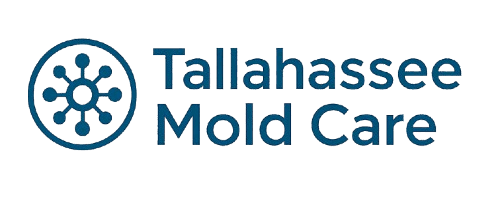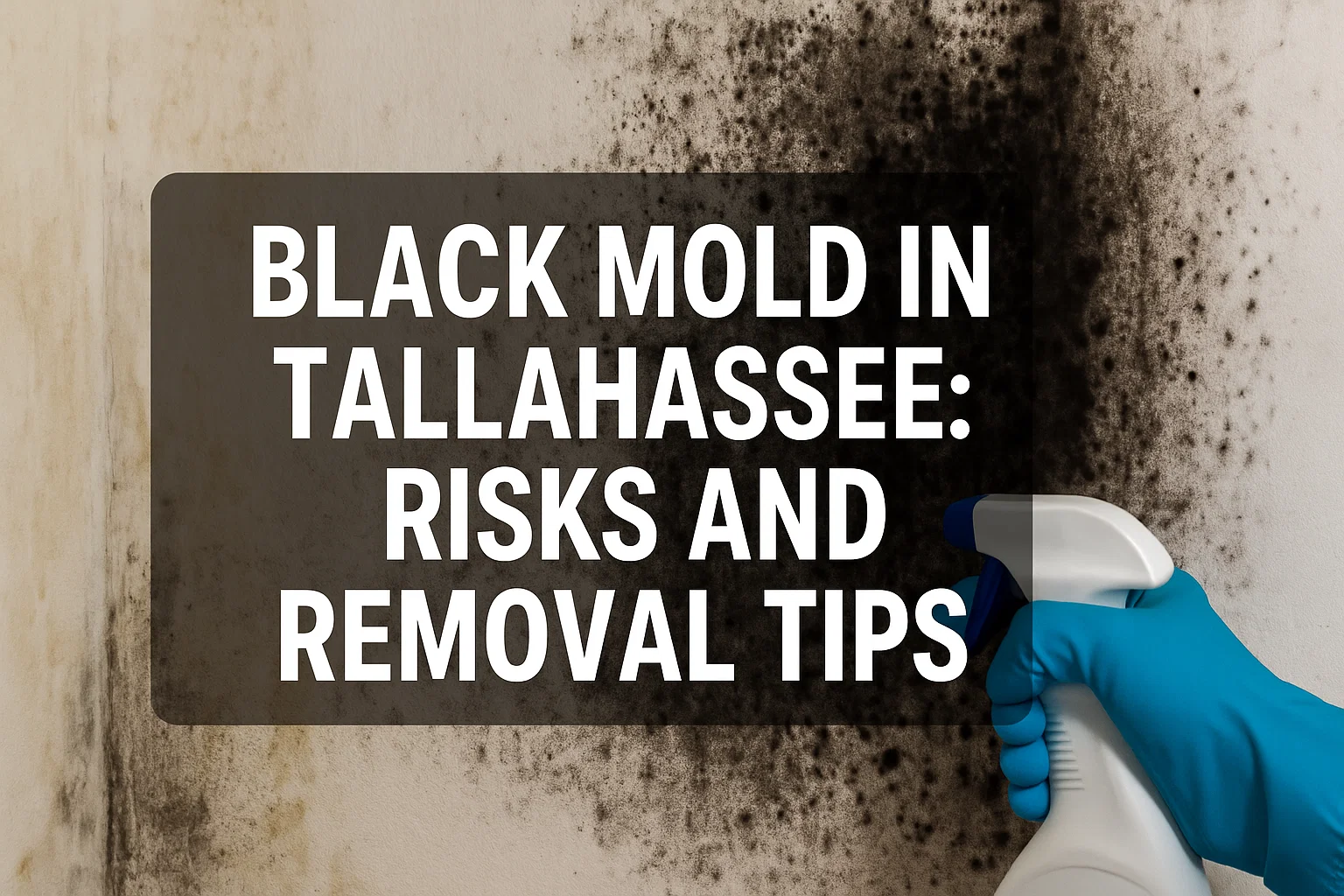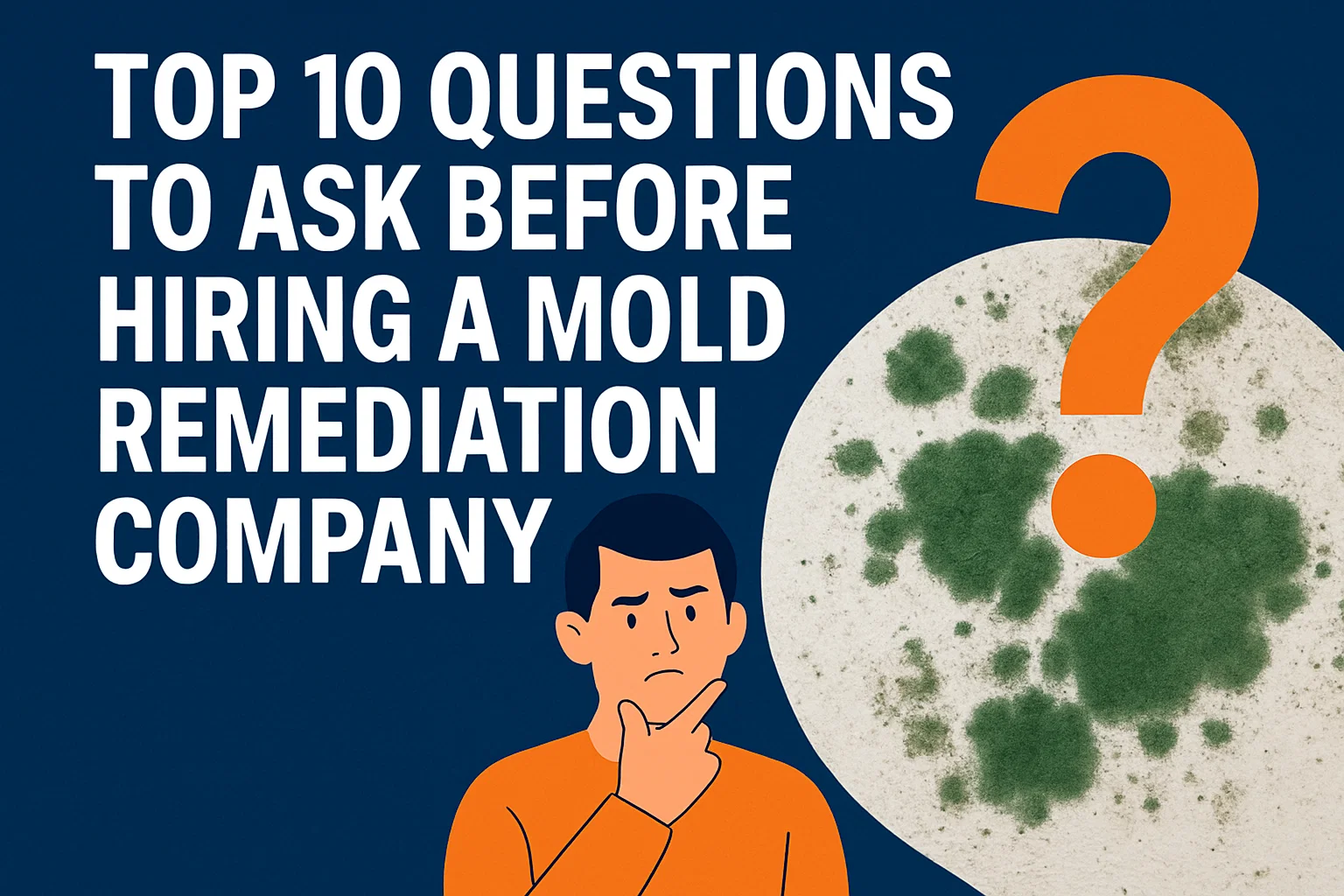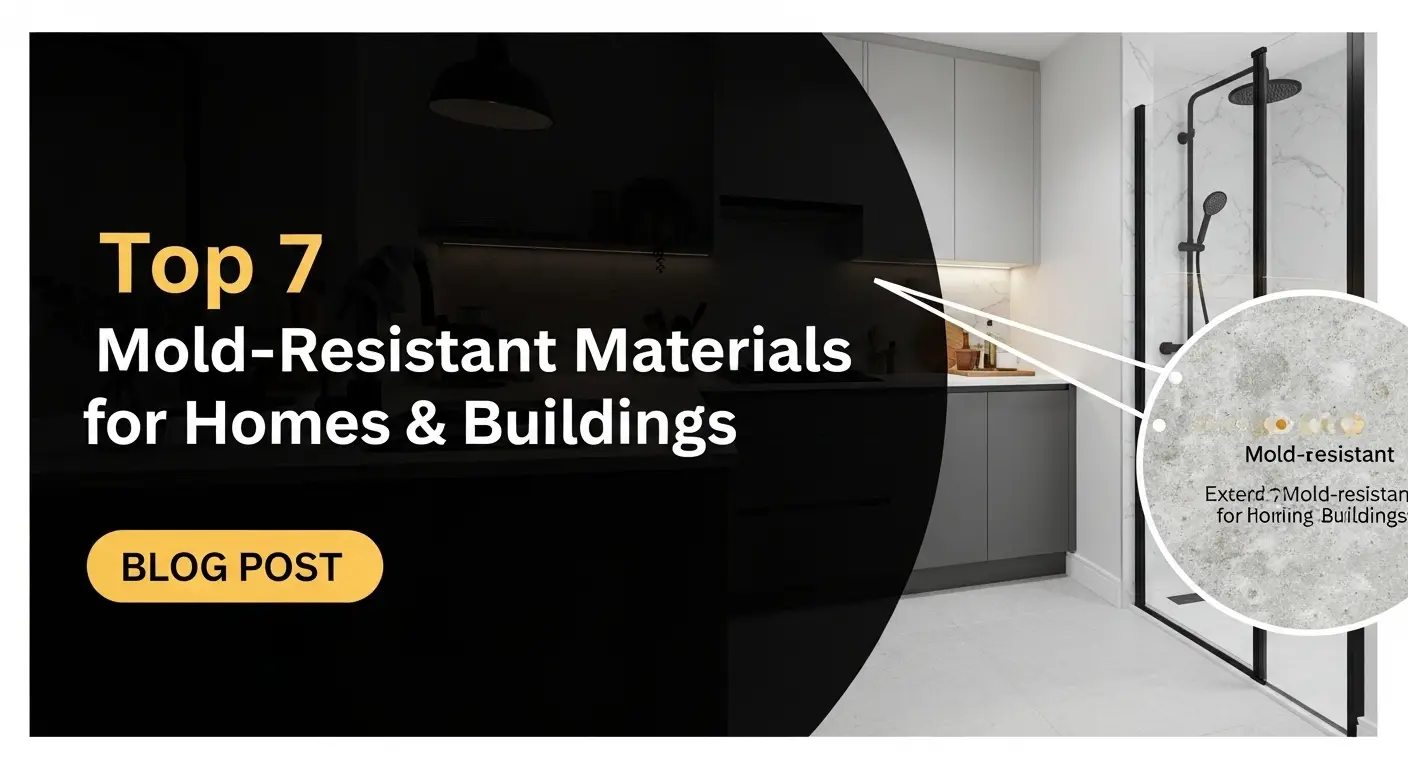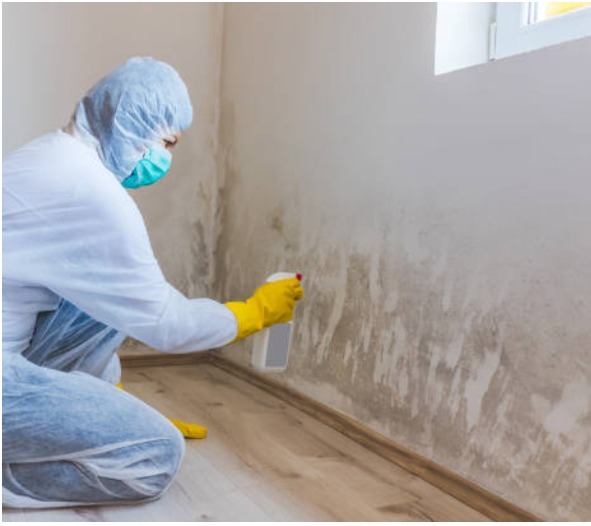Mold growth in homes and businesses have become a serious concern, especially in humid areas like Tallahassee, FL. It’s crucial to act fast, when mold appears, as it can cause structural damage and pose health risks. Knowing when to call a mold removal specialist can make all the difference. If you notice signs of mold early on, you can prevent major problems before they happen.
Recognizing Mold in Your Home or Business
When it comes to mold, early detection is key. Mold doesn’t just affect the appearance of your home or business; it also impacts the air quality and the overall health of those living or working in that space. Here are the most common signs that indicate you should call a mold removal specialist.
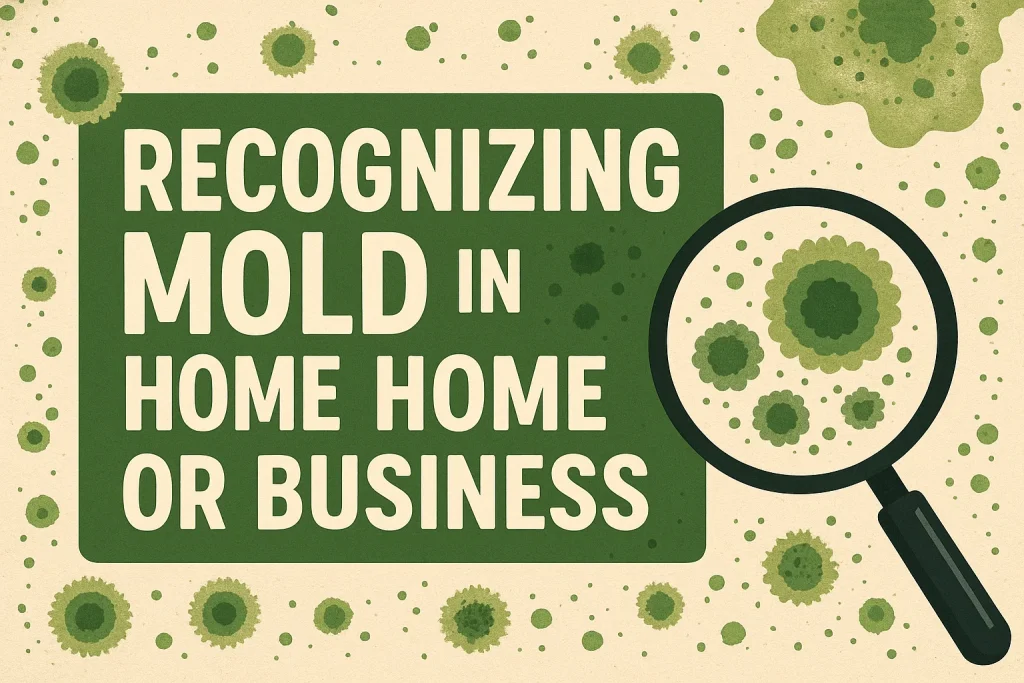
If You See Mold With Your Naked Eyes
If you spot visible mold growth, whether it’s on your walls, ceilings, or floors, it’s time to call a mold removal expert. Mold usually appears in hidden areas like behind wallpaper or under sinks or carpets. Mold just needs one thing which is high humidity levels, when it gets the perfect environment, it starts to spread rapidly. Sometimes the mold you see is just the tip of the iceberg; there may be more behind walls or under floors that are not immediately visible.
Visible mold means it has been growing for a while silently. Mold can appear in many colors—green, black, white, or even orange—so don’t assume that all mold is the same. The longer you wait, the more expensive and complicated the removal process can become.
Musty Smell
Another clear indicator of mold is a musty, earthy smell. Even if you can’t see mold, the presence of this odor means mold spores are likely floating through the air. The smell usually points to hidden mold growth behind walls, in attics, or in basements.
If you notice this smell, don’t ignore it. Prolonged exposure to mold spores in the air can lead to respiratory issues and allergic reactions. This is why it’s essential to contact a mold removal specialist as soon as you detect the musty odor. They can perform a mold inspection and identify areas of concern before the mold becomes a bigger problem.
Identifying Environmental Factors That Promote Mold Growth
Mold growth is a common issue, where humidity levels are high. Understanding the environmental factors that contribute to mold growth is essential for preventing it from becoming a bigger problem. Two of the most common factors are excess moisture and water damage, along with the aftermath of natural disasters.
Excess Moisture or Water Damage
Moisture is the primary cause behind mold growth. Excess moisture from daily activities—such as cooking, bathing, or drying clothes—can make the environment perfect for mold to thrive. The problem can even further worsen when water damage occurs. Leaks from roofs, pipes, or windows can lead to hidden moisture buildup under floors, or ceilings. Mold can often grow in these unseen areas, spreading silently and rapidly.
After a Natural Disaster
Natural disasters like floods, heavy rains, or hurricanes are frequent in Tallahassee. These events not only cause immediate damage but also leave lasting conditions that promote mold growth. Flooded areas, in particular, provide an abundant source of moisture that mold needs to thrive. Buildings and homes that remain damp after a disaster are prime targets for mold infestations. Water that seeps into the walls and foundations can remain trapped, creating a moist environment that supports the rapid growth of mold spores.
After a natural disaster, it’s essential to dry out your property quickly. The longer it is left untreated, the more expensive and difficult it becomes to remove. Calling a mold removal specialist after flooding or other disasters is critical to ensure your property remains safe and free of mold contamination.
When Mold Becomes a Recurring Problem
Mold is often a hidden threat. You might clean up the visible signs but why does it keep coming back? Understanding why mold becomes a recurring problem is the first step in preventing future infestations.
Over time, mold continuously grows in places you can’t easily see, like behind walls, inside HVAC systems, or under carpets. If there’s still moisture or an unresolved source of water, mold will return. Even after cleaning visible mold. The mold spores can remain in the air ready to grow again. The key to solving this issue is addressing the root cause, not just the symptoms.
Mold Inspection vs. Mold Testing
When dealing with mold issues, people easily get confused between mold inspection and mold testing. Both are important steps in identifying and resolving mold problems, but they serve different purposes. Understanding the difference can help you make the right decision when hiring a mold specialist.
What’s the Difference?
Mold inspection is a visual process. An inspector examines your property for visible signs of mold, moisture, and water damage. They assess areas like walls, ceilings, basements, and crawl spaces where mold is likely to grow. In mold inspection the goal is to identify the extent of the mold problem and determine the best course of action for removal. During the inspection, specialists may use tools such as moisture meters or infrared cameras to detect hidden moisture, which could indicate a potential mold risk.
Mold testing, on the other hand, is more specific and involves collecting samples from the air or surfaces to determine the type and concentration of mold present. Mold testing is useful when the mold isn’t visibly apparent or when you want to confirm the presence of mold. The test results help determine if the mold poses a health risk and guide the remediation process.
What Are The Benefits of Mold Testing for Your Home or Business
Mold testing provides several benefits. First, it can identify hidden mold growth that might not be noticeable during a visual inspection. Without testing, you might miss mold hiding in specific areas, which could spread and cause more damage. Below are some more benefits you get with mold testing.
What Happens During a Mold Inspection?
A mold inspection is a critical first step in identifying and addressing mold problems in your home or business. It provides a clear picture of the extent of mold contamination and helps determine the best course of action for remediation. Understanding what happens during the inspection can help you feel more confident and prepared for the process.
Step-by-Step Guide to the Mold Inspection Process
The mold inspector will begin by asking you questions about your property. They will want to know if you’ve noticed visible mold, experienced water damage, or encountered any musty smells. This helps them focus on the areas most likely to have mold.
1) Visual Inspection
The inspector will visually examine the property, looking for signs of mold growth. They’ll check common problem areas like bathrooms, basements, attics, and around windows or pipes. The inspector will also look for moisture problems, which are the main contributors to mold growth. They will check for water stains, leaks, or damp areas on walls, ceilings, and floors.
2) Use of Tools and Technology
To detect hidden mold, inspectors use specialized tools such as moisture meters, infrared cameras, and thermal imaging devices. These tools help identify areas with high moisture levels that may not be visible to the naked eye. Infrared cameras, for example, can detect temperature differences, revealing areas that are likely damp, such as behind walls or under floors. Moisture meters measure the moisture content in materials, which is key to understanding mold risks.
3) Air Quality Testing (if necessary)
If visible mold isn’t found but there is still a suspicion of mold growth, air quality testing may be done. This involves taking samples of air from different rooms to analyze the concentration of mold spores. The inspector may also collect surface samples from areas like walls or carpets to test for mold presence. Testing helps determine the type of mold present and its potential health risks.
4) Identifying the Source of Moisture
One of the most important steps in a mold inspection is finding the source of moisture that’s fueling mold growth. The inspector will look for plumbing leaks, roof leaks, poor ventilation, or inadequate drainage. Identifying and addressing the moisture issue is crucial for preventing future mold growth.
5) Detailed Report and Recommendations
After completing the inspection, the inspector will provide a detailed report. This report will include the findings of the visual inspection, air quality tests, and moisture readings. It will also outline areas of concern, the type of mold found (if any), and the extent of contamination. Based on the inspection, the report will offer recommendations for remediation and provide estimates for mold removal and repairs.
After the Inspection: Your Next Steps
Once the mold inspection is complete, it’s time to understand the next steps. The information gathered during the inspection will guide the mold remediation process, helping to ensure your home or business is safe and free of mold. Knowing what to expect will help you make informed decisions and address mold issues effectively.
When to Start the Mold Removal Process
It’s crucial to start the mold removal process as soon as possible after the inspection. Mold can spread quickly, especially in humid environments like Tallahassee. The longer you wait, the more difficult and expensive the remediation will become. Additionally, the longer mold sits undisturbed, the higher the potential for health risks to residents or employees.
The timing of mold removal also depends on the level of contamination. In severe cases, it might be best to begin the mold removal process immediately to avoid health hazards. In less severe cases, the process might start after you’ve addressed the moisture problem, but it’s still critical to act quickly to prevent it from getting worse.
What Affects the Cost of Mold Removal in Tallahassee, FL?
Mold removal can be an expensive process, especially when it’s not caught early. The cost of mold remediation in Tallahassee depends on several factors. Understanding these elements can help you plan your budget and avoid surprises. Here’s what influences the cost of mold removal.
Factors Influencing Mold Remediation Costs
The larger the area affected by mold, the higher the cost. A small patch of mold in the bathroom may cost less to remove than extensive contamination throughout a basement or attic. The bigger the area, the more materials and labor required to address the problem.
Type of Mold
Not all mold is the same. Some molds, such as black mold (Stachybotrys chartarum), can be more hazardous and require specialized removal techniques. Toxic mold poses a higher risk to health and needs more thorough remediation. If the mold is found to be particularly harmful, the process could include more careful containment measures, specialized equipment, and protective gear for the workers, all of which add to the overall cost.
Location of the Mold
Mold growth in hard-to-reach areas, like within walls, under flooring, or inside HVAC systems, can increase the cost. The inspector may need to break through walls or remove flooring to fully address the problem. The complexity of accessing these spaces requires more time and resources, raising the cost of the job.
Moisture Source and Damage
If mold is found near areas of water damage or leaks, addressing the moisture source becomes essential. Mold can return if the underlying cause of moisture is not fixed. Repairing leaks, improving ventilation, or installing dehumidifiers to control moisture in high-humidity areas like Tallahassee can significantly add to the cost of remediation.
Extent of Contamination
The extent of mold contamination also influences pricing. Light contamination may only require surface cleaning, while severe mold problems can lead to structural damage, requiring significant repairs. If materials like drywall, insulation, or carpeting need to be replaced, the cost can increase substantially.
Labor and Equipment
The cost of labor and specialized equipment also plays a role. Mold remediation specialists use high-powered fans, air scrubbers, dehumidifiers, and specialized cleaning agents to remove mold. The use of these tools and the expertise required to handle them effectively can affect the overall price.
Typical Mold Removal Pricing in Tallahassee
The cost of mold removal typically ranges from $500 to $6,000, depending on the severity of the mold problem and the factors mentioned above. For minor mold issues, such as a small patch in a bathroom, you may pay closer to $500-$1,500. Moderate contamination that involves multiple rooms or hidden mold behind walls could cost anywhere from $1,500 to $3,000.
For more serious mold infestations, like those in basements, attics, or other hidden areas, the cost can increase significantly, ranging from $3,000 to $6,000. This price often includes the removal of affected materials, moisture control measures, and necessary repairs to prevent future mold growth.
If you need testing or additional services like air quality assessments, these can add anywhere from $200 to $800 to the total cost. It’s important to remember that mold removal is an investment in your property’s health and safety. Ignoring mold problems can lead to more costly damage and health risks in the long term.
Why You Should Hire Tallahassee Mold Care Services in Florida
When it comes to mold removal, choosing a reliable, local company can make a significant difference. Mold growth is common in humid areas like Tallahassee, and dealing with it requires both expertise and fast action. Here’s why you should consider hiring Tallahassee Mold Care Services for your mold inspection and removal needs.
Local Expertise with a Personalized Approach
Tallahassee Mold Care Services stands out for its deep knowledge of the local climate and the specific challenges that Tallahassee homes and businesses face. The high humidity and frequent rainfall in this area create ideal conditions for mold growth, which is why local expertise is invaluable. Mold specialists familiar with Tallahassee can quickly identify the root causes of mold problems, whether it’s moisture from leaks, high humidity, or inadequate ventilation.
Trustworthy, Certified, and Experienced Technicians
When hiring a mold removal specialist, you want to be sure you are working with certified professionals. Tallahassee Mold Care Services employs technicians who are IICRC certified, meaning they meet the highest standards for mold remediation and water damage restoration. Certification from reputable organizations ensures that the technicians have the necessary training and experience to handle mold removal safely and effectively.
Emergency Mold Removal Services
Mold doesn’t wait for a convenient time to appear, and it can spread quickly, causing significant damage to both the structure of your property and the health of its inhabitants. That’s why Tallahassee Mold Care Services offers emergency mold removal services to address mold issues as soon as they arise.
Whether you’ve experienced a sudden leak, flood, or just noticed unexpected mold growth, their team is ready to respond quickly. Fast action is critical in mold remediation to prevent it from spreading to other areas of the property or causing health problems such as allergies, asthma, or respiratory issues. Tallahassee Mold Care Services offers 24/7 emergency response, so you can rest easy knowing that help is available when you need it most.
Health Benefits of Professional Mold Remediation
Mold poses serious health risks, especially for those with respiratory conditions, allergies, or compromised immune systems. Prolonged exposure to mold spores can cause a range of symptoms, including coughing, sneezing, wheezing, and skin irritation. In severe cases, mold exposure can trigger asthma attacks and lead to long-term respiratory issues.
Mold remediation specialists are trained to recognize and treat even the most difficult cases of mold contamination, such as hidden mold in walls or under floors. By addressing all areas of contamination, professionals ensure the mold doesn’t continue to affect the health of those within the building. Without professional intervention, mold is likely to return, putting residents and employees at continued risk.
Conclusion:
If you’ve noticed any signs of mold or moisture issues in your home or business in Tallahassee, it’s time to take action. Waiting too long can lead to further contamination, structural damage, and potential health complications.
By hiring a professional mold removal service, you ensure that the problem is addressed thoroughly and safely. Professional mold specialists use the right tools and techniques to identify hidden mold, remove it completely, and prevent future growth. Taking swift action will not only restore your property’s safety but also protect your health, your investment, and your peace of mind.
FAQS
Is Mold Removal Covered by Home Warranty?
Some home warranties may cover mold removal, but this typically depends on the cause of the mold growth. If the mold is the result of a covered issue, like a plumbing leak, some policies may help with the costs. However, mold growth due to long-term moisture exposure may not be covered. Always review your warranty policy to understand the details.
How Do I Prevent Mold Growth in Tallahassee Homes?
Preventing mold in Tallahassee homes starts with controlling moisture. Use dehumidifiers in high-humidity areas, fix leaks immediately, ensure proper ventilation in bathrooms and kitchens, and consider using mold-resistant paints or materials. Regularly inspect areas prone to moisture, such as basements and attics, to catch potential problems early.
How Long Does Mold Removal Take?
The time required for mold removal depends on the extent of the contamination and the areas affected. Small, isolated mold patches may take just a few hours to remove, while more severe infestations can take several days. The complexity of the job, including repairs and moisture control, will also impact the timeline.
Can I Remove Mold Myself or Do I Need a Professional?
While small mold problems can sometimes be tackled with DIY methods, professional intervention is often necessary for larger infestations or hidden mold. Mold removal specialists have the expertise, tools, and safety equipment required to ensure thorough remediation without spreading spores or causing health risks. If you notice mold in hard-to-reach areas or suspect extensive contamination, it’s best to call a professional.
